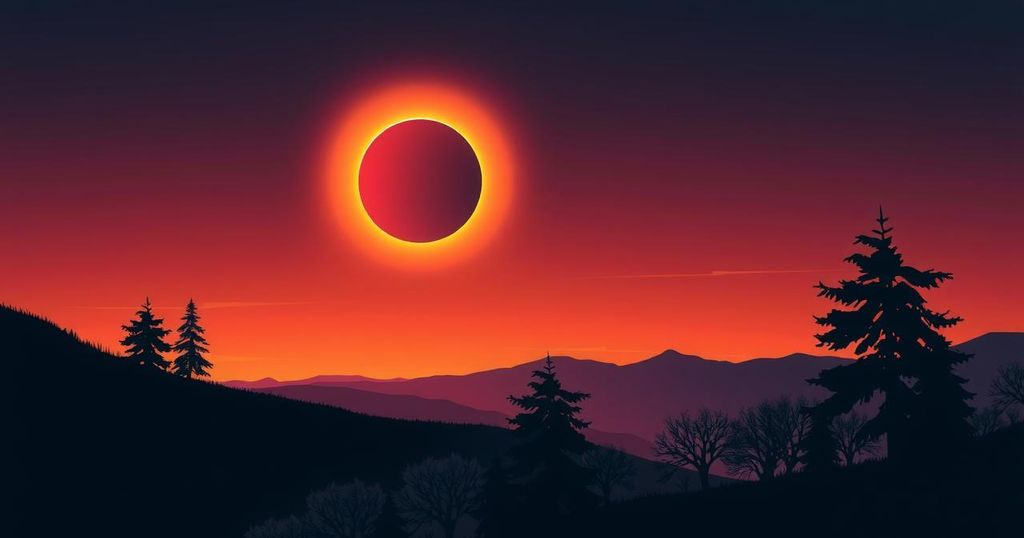Surya Grahan 2025: Partial Solar Eclipse Details and Viewing Guidelines

On March 29, 2025, a partial solar eclipse will occur, visible from several regions including parts of North America and Europe but not India. Spectators must exercise safety measures while viewing. The eclipse will produce phenomena such as double sunrise in some areas and will last for approximately four hours.
The first solar eclipse of 2025, known as “Surya Grahan” in India, will occur on March 29. During this celestial event, the Moon will partially block the Sun, but they will not be perfectly aligned, resulting in a partial solar eclipse. The eclipse will be observable from various locations worldwide, including parts of the USA, Canada, South America, Iceland, Greenland, Europe, and Northern Asia, but it will not be visible in India.
This eclipse is considered one of the most significant celestial happenings of the year, offering different viewing experiences based on geographical location. Some regions will witness the eclipse at sunrise while others view it in the afternoon. Notably, areas experiencing the eclipse may observe a phenomenon called double sunrise, where the Sun appears to rise twice due to the Moon’s shadow.
In the UK, the extent of the eclipse will vary significantly. Northern Scotland, particularly Gallan Head, is expected to experience the greatest coverage at 47.9%. In contrast, Dover will have the least visibility, with only 28.1% of the Sun obscured, while Manchester is estimated to see 36.1% coverage.
Safety is paramount when viewing solar eclipses. Observers should check eclipse glasses for scratches, tears, or any damages before use, especially among children. Ordinary sunglasses are insufficient for solar viewing, and viewers should never use eclipse glasses with telescopes or cameras as this can result in severe eye damage.
To safely observe the eclipse, individuals must utilize certified solar viewing glasses or handheld solar viewers, which are thousands of times darker than regular sunglasses and must comply with ISO 12312-2 standards. Alternatively, a pinhole projector can be employed to indirectly view the eclipse.
Google will celebrate the solar eclipse by displaying a special animation when users search for “solar eclipse” or “surya grahan,” illustrating the event. It is crucial to note that looking directly at the Sun during an eclipse is unsafe and can cause permanent eye damage, necessitating the use of appropriate viewing equipment.
The timing of the eclipse will differ worldwide, with areas in the Americas starting to witness it during sunrise, while Europe and Africa will see it beginning by late morning. In various regions in eastern Europe and northern Asia, much of the eclipse will transpire in the afternoon or early evening.
In India, the eclipse will not be visible despite its occurrence in multiple parts worldwide. Furthermore, people in some regions may experience a unique double sunrise phenomenon as they watch the eclipse at dawn, creating the illusion of the Sun rising twice, noted to happen in parts of the USA and Canada.
The eclipse will begin in Indian Time at 2:20 PM, peak at 4:17 PM, and conclude at 6:13 PM, lasting a total of approximately four hours.
The partial solar eclipse on March 29, 2025, will be a major celestial event visible from various locations worldwide but not in India. Observers must take necessary precautions to safely view the eclipse using certified glasses or indirect viewing methods. Unique phenomena, such as double sunrise, can be witnessed in some regions. Timing will vary across different time zones, with the eclipse lasting about four hours.
Original Source: www.hindustantimes.com






